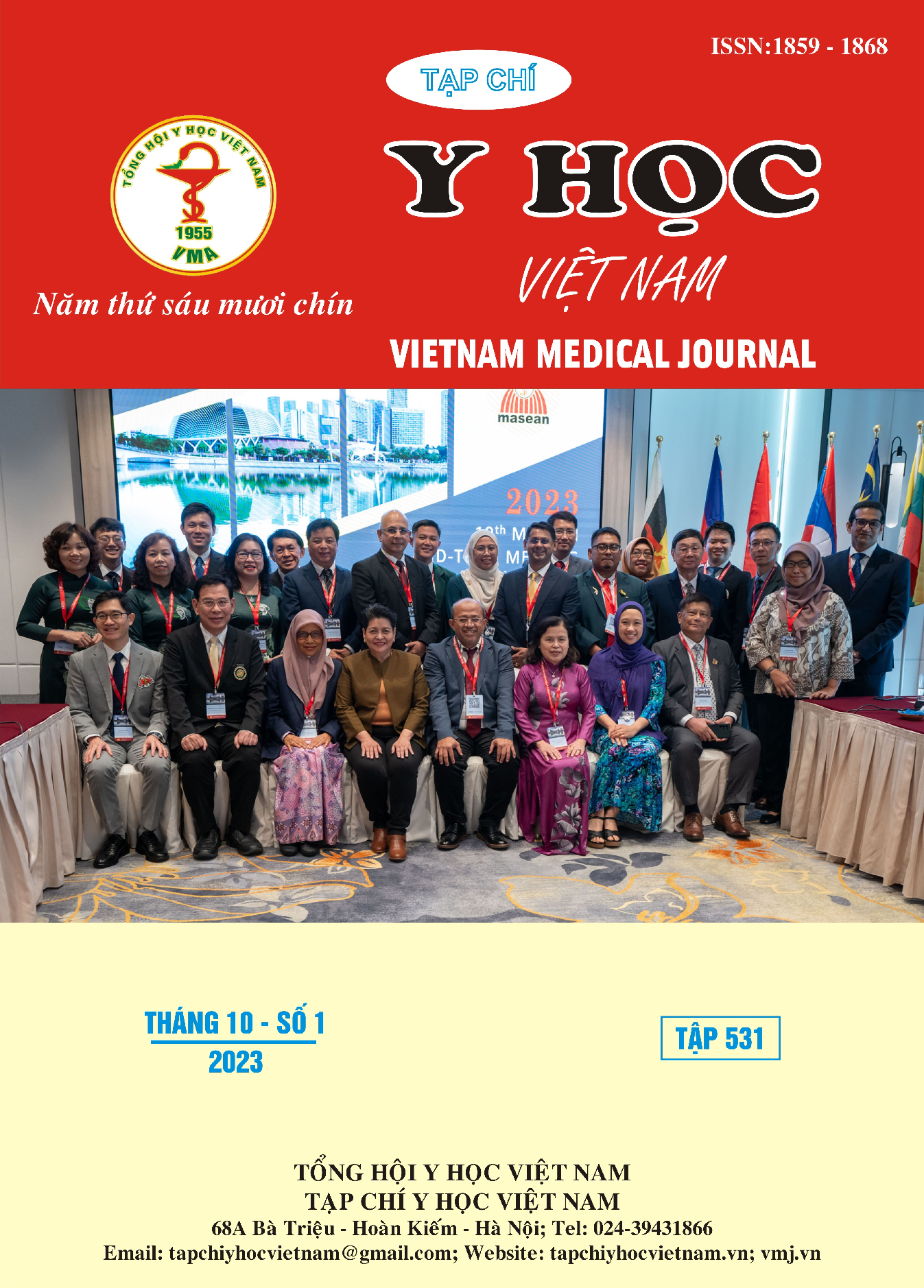CLINICAL AND SUBCLINICAL CHARACTERISTICS OF PATIENTS WITH LONG COVID AT RESPIRATORY OUTPATIENT CLINICS OF TAM ANH HOSPITAL
Main Article Content
Abstract
Background: COVID-19 is a widespread pandemic that has led to a dramatic loss of human life worldwide and presents an unprecedented challenge to public health. Some patients who recover from COVID-19 develop persistent or new symptoms known as “long COVID”. Long COVID is reported to affect a considerable portion of COVID-19 recoverees, which is estimated to be at 10-30%, and symptoms may persist for longer than 1 year. There is fewer clinical and subclinical studies of patients with long COVID-19 in Viet Nam. Therefore, we conducted this study to evaluate some clinical and subclinical characteristics of patients with long COVID-19. Objective: Describe clinical features and paraclinical characteristics in patients with long COVID-19. Subjects and Methods: A cross-sectional study was carried 172 patients with long COVID-19 managed at Tam Anh hospital from February, 2022 to october, 2022. Results: The common symptoms: Fatigue (57%), shortness of breath (51,2%), dry cough (43,6%), chest pain (27,3%), insomnia (25%), and attention disorder or memory impairment (25,3%); Blood tests: AST > 40 U/l (2,9%), ALT > 40 U/l (4,1%), CRP > 0,5 mg/dl (10,1%), Ferritin >300 ng/ml (19,6%), D-dimer > 0,5 µg FEU/ml (9,9%). Chest X-ray: (n=152): bronchial wall thickening (13,2%), consolidation (3,9%), ground-glass opacity (3,9%), nodule (2,6%); Chest CT (n=56): Linear opacity (37,5%), bronchiectasis and bronchial wall thickening (33,9%), ground-glass opacity (21,4%), nodule (19,6%), consolidation (10,7%), pulmonary fibrosis (8,9%); Spirometry: signs of restrictive ventilatory disorder (18,02%), obstructive ventilatory disorder (5,81%); 6 minute walk test (n = 93): Decline in walking distance (87,1%), 6MWD mean: 468,05 ± 61,12 (m). Conclusion: Long COVID-19 is multiorgan syndrome caused persistent health problems. Common symptoms: Fatigue, shortness of breath, shortness of breath, Decline in walking distance after the 6-minute walking test. Long-term monitoring and management of patients with long COVID-19 is required.
Article Details
Keywords
SARS-CoV-2, long COVID-19, spirometry, 6 minute walk test
References
2. Hastie CE, Lowe DJ, McAuley A, et al. Outcomes among confirmed cases and a matched comparison group in the Long-COVID in Scotland study. Nature Communications. 2022;13(1):5663.
3. Taquet M, Dercon Q. Incidence, co-occurrence, and evolution of long-COVID features: A 6-month retrospective cohort study of 273,618 survivors of COVID-19. 2021;18(9):e1003773.
4. Arnold DT, Hamilton FW, Milne A, et al. Patient outcomes after hospitalisation with COVID-19 and implications for follow-up: results from a prospective UK cohort. 2021;76(4):399-401.
5. Garrigues E, Janvier P, Kherabi Y, et al. Post-discharge persistent symptoms and health-related quality of life after hospitalization for COVID-19. The Journal of infection. 2020;81(6):e4-e6.
6. Anastasio F, Barbuto S, Scarnecchia E, et al. Medium-term impact of COVID-19 on pulmonary function, functional capacity and quality of life. The European respiratory journal. 2021;58(3).
7. Trinkmann F, Müller M, Reif A, Kahn N. Residual symptoms and lower lung function in patients recovering from SARS-CoV-2 infection. 2021;57(2).
8. González J, Benítez ID, Carmona P, et al. Pulmonary Function and Radiologic Features in Survivors of Critical COVID-19: A 3-Month Prospective Cohort. Chest. 2021;160(1):187-198.


